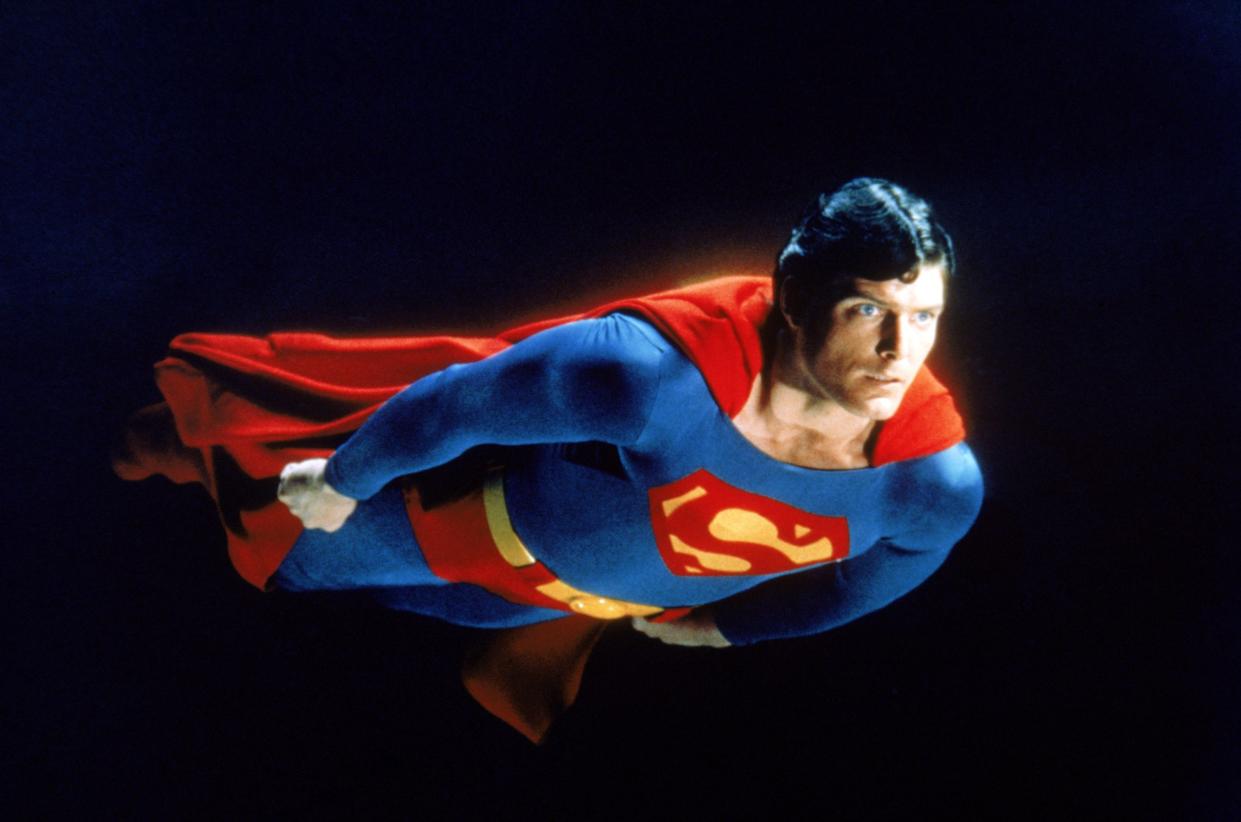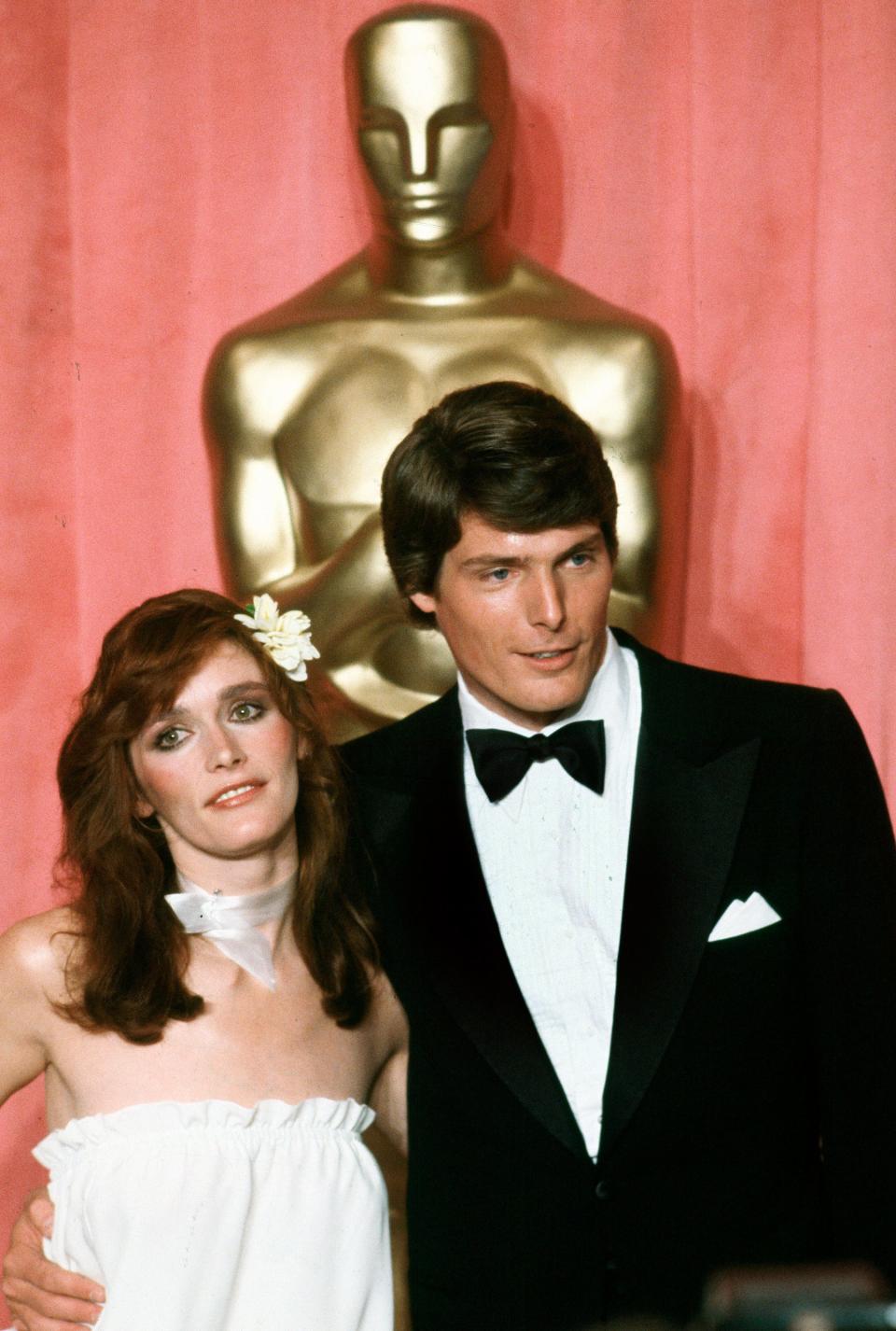You'll still believe a man can fly when you see Christopher Reeve soar in 'Superman'

- Oops!Something went wrong.Please try again later.
- Oops!Something went wrong.Please try again later.
- Oops!Something went wrong.Please try again later.
- Oops!Something went wrong.Please try again later.
Four years in the planning and 19 months in production, it all came down to six words for “Superman: The Movie” when it opened 45 years ago this month.
Without that, producers knew “Superman” wouldn’t.
Revolutionary wizardry made the fantastic a reality. Moviegoers believed. And “Superman: The Movie” became “Superman” the must-see release of the 1978 holiday season, ending up the biggest film of 1979.
In the then-40 years since DC Comics had introduced the character created by Jerry Siegel and Joe Shuster, Superman had been the source of a radio drama, film serial, TV series and stage musical. “Superman” was to be its first big-budget big-screen telling – a sweeping origin story chronicling how the infant Kal-El escapes his home planet’s imminent destruction, crash-lands on Earth to be raised as farm boy Clark Kent, and evolves into the high-flying Man of Steel, hidden behind the guise of a mild-mannered Metropolis reporter.
Alexander and Ilya Salkind, the father-son team who secured the rights from DC Comics in 1974, along with fellow producer Pierre Spengler, envisioned a crowd-pleaser worthy of what had become a legendary figure. Early hires Marlon Brando (to portray Kal-El’s Krypton father Jor-El) and Gene Hackman (as Superman nemesis Lex Luthor, whose plan for world domination takes up the second half of the film) signaled the intention. This was to be no camp B-movie.

When filming began in March 1977 with 24-year-old unknown Christopher Reeve in the coveted lead – beating out 200 other actors, including a murderer’s row of 1970s familiar faces − director Richard Donner had a singular mandate: verisimilitude.
“It’s a word which refers to reality,” Donner said at the time. “I had it printed on big signs which were sent to every creative department – wardrobe, casting, special effects, you name it. It was a constant reminder that if we gave in to temptation and parodied Superman, we would only be fooling ourselves.” (The film’s first line of dialogue, spoken by Brando’s Jor-El in a court summation scene: “This is no fantasy.”)
Ranked: The 50 best superhero movies ever (from 'Blue Beetle' to 'Superman')
The reverence included ambitions for the first realistic depiction onscreen of Superman in flight, which proved a challenge. Early attempts were expensive failures. “We lost about $2 million (on flying tests)," Ilya Salkind recalled. “Nobody knew how to make the guy fly."
An innovation called the Zoptic Process, designed by effects specialist Zoran Perisic, proved part of the breakthrough. It involved a front-screen projection system with zoom lenses that allowed the camera to zoom in or out on Superman while the projected imagery behind him – incorporating real-world footage rather than blank sky − advanced or receded.
Combined with next-level blue screen and an elaborate system that allowed Superman to interact with people or objects in flight, the film’s many airborne sequences − the wooing of Lois Lane over Metropolis, his efforts to quash Lex Luthor’s plans to destroy California – made this “Superman” soar.
"You'll believe a man can fly" became the centerpiece of pre-release publicity and the film’s promotional tagline.
It paid off both at the box office, where the $55 million movie – at the time, the most expensive movie ever − earned $300 million worldwide. It paid off at the Academy Awards, too, where the “Superman” effects team was given a special technical achievement award. (The film was nominated for editing, sound and John Williams’ bombastic original score.)
Three sequels followed, though “Superman II” was a given: It shot simultaneous with “Superman” to offset costs. (Donner was removed from the sequel before filming was complete, however, amid clashes with producers; he was replaced by Richard Lester, who scrapped much of the footage.) Christopher Reeve starred in all the follow-ups, the last of which was released in 1987. Each met with successively diminishing returns. (Reeve died in 2004, nine years after a horseback riding accident left him a quadriplegic.)
A new century has yielded new Superman adventures on television, in gaming, in standalone films, and as part of the ever-expanding DC Universe movies. (Trivia: Some 50 actors have portrayed Superman in its many formats since 1938, from Kirk Alyn in 1948 to David Corenswet in “Superman: Legacy,” scheduled for 2025.)
Margot Kidder dies at 69: The actress played Lois Lane in 1978's 'Superman'
But at a time of costumed-crimefighter overload, as Screen Rant noted in 2020, “Richard Donner first proved that a superhero movie could be a viable blockbuster" and "Superman" went on to "set the template for every superhero origin story that would follow.”
In 2017, “Superman: The Movie” was added to the National Film Registry for being "culturally, historically or aesthetically significant." It was a first both for a DC character and for a superhero film.
This article originally appeared on USA TODAY: 'Superman': How Christopher Reeve convinced moviegoers he could fly

